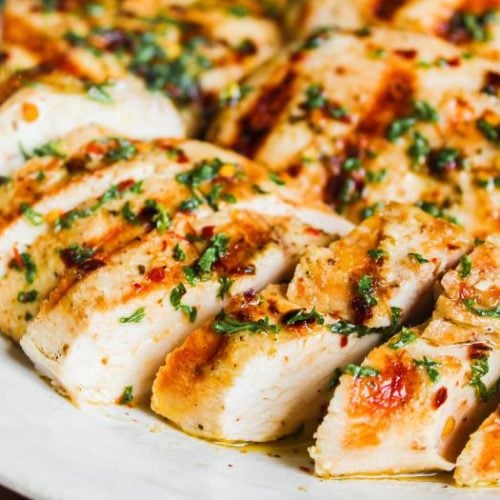Barbecued Meatballs: Delicious Recipes, Cooking Tips, and Health Benefits
Barbecued meatballs, combining ground meat and tangy barbecue sauce, likely emerged in the mid-20th century. Their roots can be traced to American backyard barbecues, where inventive cooks started experimenting with different dishes. Meatballs themselves have a global history, with variations seen in nearly every culture. Barbecued meatballs became popular in the United States due to their versatility and flavorful appeal, fitting seamlessly into various social gatherings and celebrations.
Evolution of the Recipe Over Time
The barbecued meatball recipe has evolved significantly. In the 1960s and 1970s, the standard recipe usually featured ground beef mixed with breadcrumbs, eggs, and seasonings, baked, then simmered in barbecue sauce. Today, variations include using different meats like turkey or pork, incorporating diverse spices, and adding unique ingredients like cheese or bacon. Various cooking methods have also emerged, from slow-cooking to grilling, each imparting distinct flavors and textures to the classic barbecued meatball.
Ingredients for Barbecued Meatballs
Main Ingredients and Their Roles
Each ingredient in barbecued meatballs contributes uniquely. Ground beef forms the base, providing the hearty texture and flavor. Choose 80% lean beef to balance flavor and moisture. Breadcrumbs help bind the meatballs, ensuring they hold their shape. Include 1/2 cup of breadcrumbs for every pound of meat.
Eggs act as a binder, maintaining the meatballs’ structure during cooking. Use one large egg per pound of meat. Onions and garlic add depth, with 1/2 cup of finely chopped onions and 2 cloves of minced garlic per pound of beef.
Salt and black pepper season the meat mixture, enhancing the overall flavor. Use 1 teaspoon of salt and 1/2 teaspoon of black pepper per pound. Parsley contributes freshness and color. Add 1/4 cup of chopped fresh parsley to the meat mixture. For a smoky touch, incorporate 1 teaspoon of smoked paprika.
Choosing the Right Barbecue Sauce
Selecting the right barbecue sauce is crucial. A balanced sauce enhances the meatballs without overpowering them. Opt for a sauce with a mix of sweetness, tanginess, and smokiness. Classic barbecue sauces contain tomato paste, vinegar, sweeteners, and spices.
Consider regional styles for variety. Kansas City-style sauce is thick and sweet, ideal for traditional flavors. Add 1 cup for coating. Carolina-style sauce, vinegar-based, offers tanginess for a unique twist. Brush lightly with 1/2 cup. For a more adventurous take, try sauces with chipotle or bourbon, using similar amounts.
Make or buy your preferred barbecue sauce, ensuring it complements the meatballs. Taste it first to ensure it matches your flavor profile.
Preparing and Cooking Barbecued Meatballs
Step-by-Step Preparation Guide
Start with finely chopping onions and garlic. Combine ground beef, breadcrumbs, chopped onions, minced garlic, eggs, salt, pepper, parsley, and smoked paprika in a large bowl. Mix ingredients thoroughly until well combined. Roll the mixture into 1-inch meatballs; this size ensures even cooking.
Preheat your grill to medium-high heat. While the grill heats up, place meatballs on a baking sheet lined with parchment paper to prevent sticking. Brush each meatball with a thin layer of your chosen barbecue sauce, ensuring even coating.
Tips for Perfect Cooking
Space meatballs evenly on the grill or use a grilling basket to keep them from falling through. Turn meatballs every 4-5 minutes to ensure uniform cooking and prevent burning. If using an oven, bake at 400°F for 20-25 minutes, turning halfway through cooking.
Monitor meatballs to avoid overcooking. Cook until their internal temperature reaches 160°F. Brush additional barbecue sauce during the last few minutes on the grill for a caramelized finish. Let meatballs rest for 5 minutes before serving to allow juices to redistribute.
Serving Suggestions for Barbecued Meatballs
Accompaniments and Pairings
Consider these accompaniments to elevate your barbecued meatballs. Offerings like coleslaw, sweet cornbread, or creamy potato salad can complement the rich flavors.
- Coleslaw: Provide a refreshing crunch, balancing the savory meatballs. Opt for a tangy vinegar-based dressing for added zest.
- Sweet Cornbread: Add a hint of sweetness to your meal. Serve warm and buttery for maximum enjoyment.
- Potato Salad: Utilize a creamy or tangy potato salad to contrast with the robust barbecue sauce.
Other excellent pairings include grilled vegetables, garlic bread, and baked beans.
- Grilled Vegetables: Add smoky elements that match the barbecue theme. Consider bell peppers, zucchini, and onions.
- Garlic Bread: Offer crunchy, buttery accents that enhance the overall texture.
- Baked Beans: Add a hearty side dish with a sweet, smoky flavor, enhancing the meatballs’ barbecue essence.
Creative Presentation Ideas
Arrange barbecued meatballs creatively to impress your guests. Use skewers, sliders, or even meatball bowls.
- Skewers: Thread meatballs with vegetables like cherry tomatoes and bell peppers for a colorful display.
- Sliders: Place meatballs in mini buns with a dollop of coleslaw, creating delightful appetizer-sized sandwiches.
- Meatball Bowls: Serve meatballs over a bed of mashed potatoes or rice, drizzling extra barbecue sauce on top.
Garnish plates with fresh herbs, such as parsley or cilantro, for a vibrant touch. Consider using stylish platters, wooden boards, or tiered stands to add a rustic charm to your presentation.
Health Considerations
Nutritional Benefits
Barbecued meatballs offer several nutritional benefits, especially when made with lean ground beef. They provide a rich source of protein, which is essential for muscle repair and growth. One serving (about 3 meatballs) can contain up to 15-20 grams of protein. Besides protein, meatballs also offer vital vitamins and minerals. For example, they contain iron, which facilitates oxygen transport in your blood, and zinc, which supports immune function.
Potential Dietary Concerns
While barbecued meatballs have nutritional benefits, they also pose certain dietary concerns if not prepared mindfully. Using high-fat meat increases the calorie and saturated fat content, which may affect heart health. Opting for lean meats can mitigate this issue. Additionally, store-bought barbecue sauces often contain high amounts of sugar and sodium. Checking labels and choosing low-sugar, low-sodium options can make your meatballs healthier. Lastly, those with gluten sensitivities should ensure breadcrumbs and sauces are gluten-free to avoid adverse reactions.
Conclusion
Barbecued meatballs are a versatile and crowd-pleasing dish that can elevate any gathering. By using the right ingredients and techniques, you can create meatballs that are both delicious and nutritious. Don’t forget to choose a barbecue sauce that complements your flavors and consider healthier alternatives if needed. Pair them with sides like coleslaw or cornbread to complete your meal. Whether you’re serving them as appetizers or mains, barbecued meatballs are sure to be a hit. Enjoy experimenting with different presentations and savor the rich, smoky flavors that make this dish a favorite.






